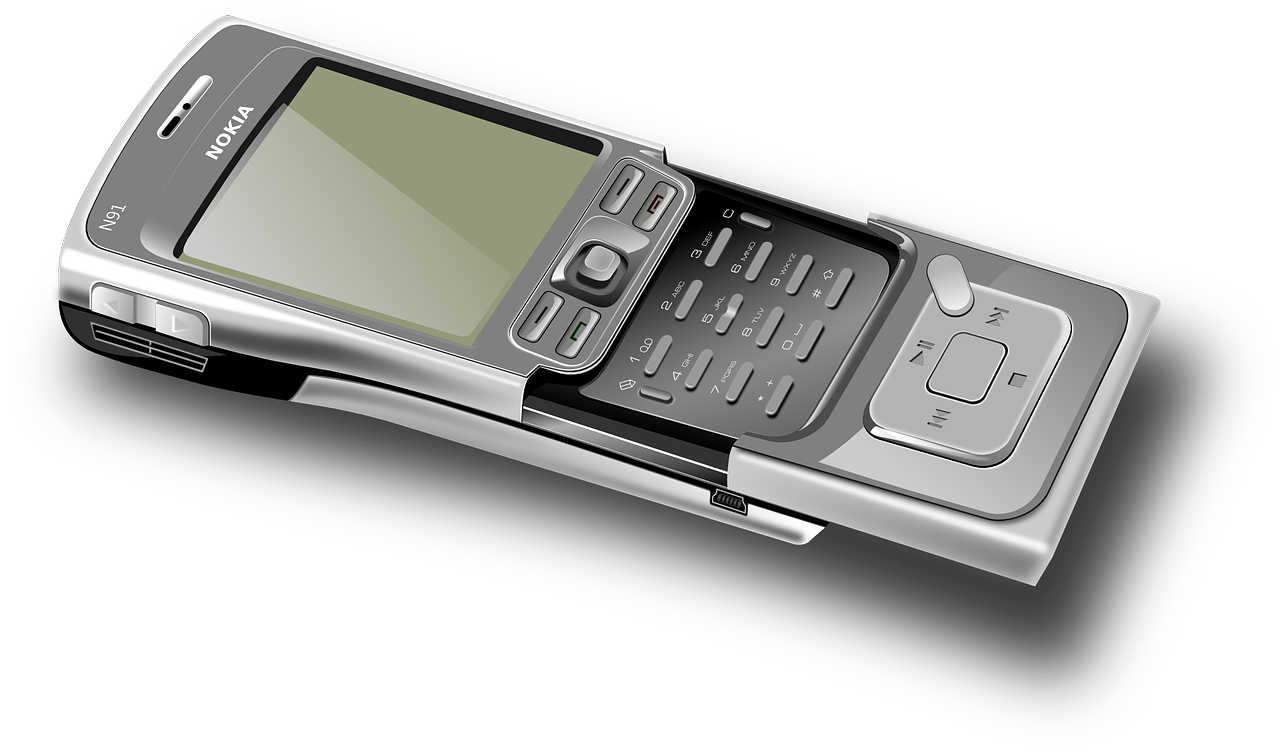Say the phrase “mobile phone,” and chances are most people will picture something like the iPhone: a sleek and relatively discreet rectangle that comes in a number of fairly neutral shades. But while this might be today’s standard image of a mobile phone, that certainly hasn’t always been the case.
The early days of mobile phones saw some surprising, unusual, and downright bizarre designs as phone manufacturers let their imaginations run wild in their scramble to create the next hit product. Read on for a round-up of 10 of the weirdest mobile phone designs ever.
-
The Motorola V70 (2002)
This model used the same principle as the clamshell designs that were popular in the early days of mobile phones – hiding the keypad underneath a cover – but instead of opening on a hinge, the cover rotated 180 degrees around the display dial, like a propeller. It certainly was a unique look, but the rotation wasn’t quite as easy or convenient as the clamshell opening method.
-
The Nokia 7600 (2003)
This handset from Nokia was among the first to be equipped with 3G connectivity, but most users agree that’s about all it had going for it. The device was designed in an odd teardrop shape, with the display in the center and buttons around the outside. As a result, most tasks required two hands, making the phone inconvenient to use despite its light weight, and the design was quickly discontinued.
-
The Samsung N270 Matrix (2003)
Designing a phone as a merchandising tie-in to a popular film might not seem like the best idea, but in fact this phone had quite a lot going for it. Inspired, as its name suggests, by the second Matrix film, the N270 featured a cool green-on-black interface, a spring-loaded earpiece, and robust voice control options. However, its futuristic appeal ended there; there was no way for users to access the web or send text messages, which was already becoming standard practice even in 2003.
-
The Nokia N-Gage (2003)
Nokia’s attempt to combine a mobile phone with a gaming console unfortunately ended up embodying the worst of both worlds. The device was shaped like a standard console, but the phone-style buttons didn’t work so well for gaming. Additionally, the extra buttons and extra bulk required to support the gaming functions made the device heavy and awkward to use as a phone. Even an effective redesign couldn’t salvage the N-Gage’s reputation, and Nokia abandoned the platform two years after its launch.
-
The Haier P7 Pen Phone (2004)
The pen-shaped Haier P7 (to be clear, not an actual pen) packed a surprising punch with its slim, streamlined design. A small joystick and directional pad let users navigate menus, and while the screen was tiny, the phone was ahead of its time in featuring a small camera.
-
The Nokia 7280 (2004)
Another slim and slender phone, the Nokia 7280 was very fashion-forward, seen as a trendy device and even winning a design award. But “cool” and “user-friendly” are not always the same thing. The Nokia 7280, which was dubbed the “Lipstick” phone due to its shape, didn’t include either a number pad or a touchscreen. Instead, users had to use a central wheel or dial for all input, even basic phone numbers, making the device a considerable hassle to use for anything other than receiving calls or listening to mp3s.
-
The Siemens Xelibri 6 (2003)
Another phone inspired by the world of makeup, the Xelibri 6 was shaped like a round powder compact with a mirror. This was a clear attempt by Siemens to make the phone into a fashionable accessory for younger girls. The company described the handset in a press release as a combination of “extremes from the world of fashion and mobile phone technology.”
-
The Nokia N90 (2005)
Talk about a camera phone! This model from Nokia allowed different segments of the phone to twist and swivel into a new configuration that resembled a handheld video camera. The device’s 2-megapixel camera featured 20x digital zoom, flash, and the ability to edit photos directly on the phone.
-
The Samsung UpStage (2007)
Bringing new meaning to the term “flip phone,” the Samsung UpStage featured a front-and-back design, with one side of the device for “phone” activities and the other side for “media” activities. To change between modes, users had to press a “flip” button on the side and turn the phone over. It was an innovative concept. However, many users found the total separation, rather than integration, of the two different modes to be more of a hassle than a convenience.
-
The Toshiba G450 (2011)
One of the more recent strangely-designed phones came from Toshiba. Its idiosyncratic three-disc layout saw the display held in one disc, with the number pad split between the two remaining discs. It was compact and had plenty of functionality – the device could be used as a phone, mp3 player, USB device, and HSDPA modem. However, the layout was difficult to use, so the device never became very popular.

